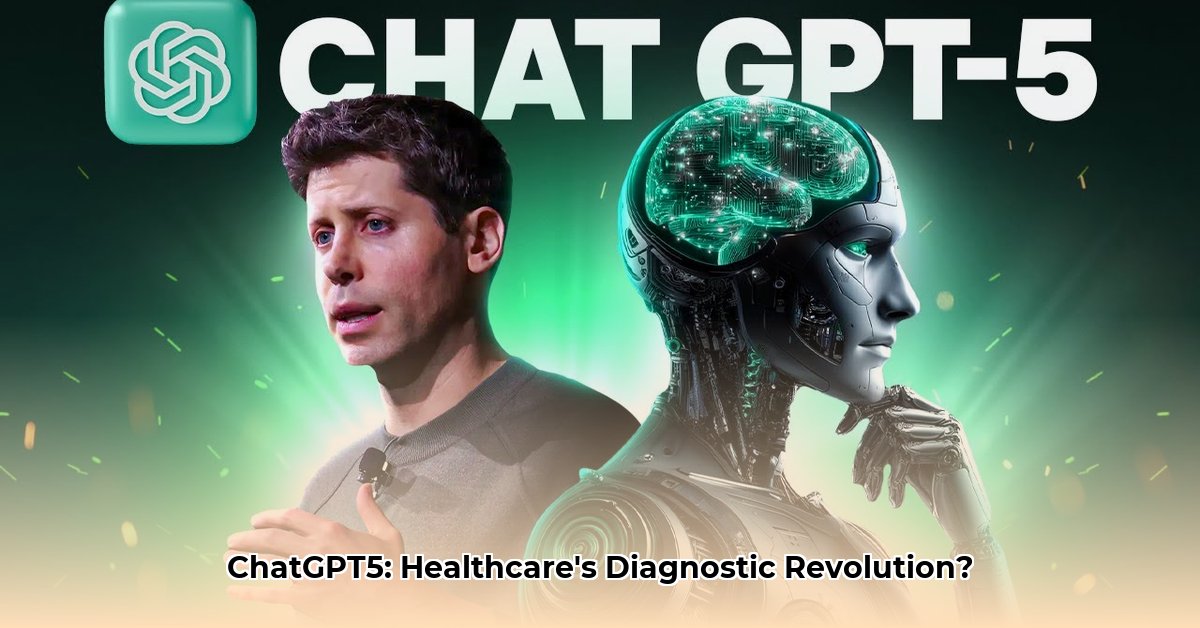
ChatGPT5 and similar advanced AI models hold transformative potential for healthcare diagnostics. Imagine a future where accurate diagnoses are swift and accessible regardless of location or resource limitations. This is the promise of AI in healthcare, with ChatGPT5 at the forefront. However, realizing this potential requires careful navigation of significant challenges.
The Road Ahead: Challenges in Integrating AI into Healthcare
Integrating powerful AI like ChatGPT5 into healthcare systems presents considerable hurdles. These include:
- Patient Privacy: Protecting sensitive medical information is paramount. Robust systems are needed to ensure confidentiality while leveraging AI for improved diagnoses.
- Regulations: Clear regulatory frameworks, such as those from the FDA, are essential. These ensure the safety and reliability of AI diagnostic tools, fostering trust and accountability.
- Algorithmic Bias: AI models learn from their training data. If this data reflects existing biases within healthcare, the AI might perpetuate inequalities, resulting in inaccurate or unfair diagnoses. Mitigating this requires careful data selection, ongoing monitoring, and rigorous testing.
Tackling Algorithmic Bias: Ensuring Fairness and Accuracy
Algorithmic bias poses a serious threat to equitable healthcare. If training data for ChatGPT5 (or similar AI) contains existing healthcare disparities, the AI may inadvertently amplify these biases. This could lead to less accurate diagnoses for certain populations. Addressing this requires:
- Rigorous testing: Thorough evaluation of AI models to identify and correct biased outcomes.
- Transparency: Understanding how AI systems reach their conclusions is crucial for building trust and ensuring fairness.
Actionable Steps for Successful AI Integration
Success hinges on collaboration among various stakeholders. Here's a roadmap for different groups:
1. Healthcare Providers:
- Short Term (1 year): Pilot AI tools in controlled settings to assess their integration into daily workflows.
- Long Term (3-5 years): Fully integrate AI into practice, including staff training and robust cybersecurity measures.
2. Regulatory Bodies (e.g., FDA):
- Short Term (1 year): Develop clear standards and guidelines for AI in healthcare diagnostics, encompassing ethical data use and algorithm transparency.
- Long Term (3-5 years): Continuously monitor AI system performance and safety, adapting regulations as technology advances.
3. Patients:
- Short Term (1 year): Promote open communication about AI's role in healthcare, emphasizing benefits and addressing concerns to build trust.
- Long Term (3-5 years): Ensure equitable access to AI-powered healthcare and improved health outcomes for all.
4. AI Developers:
- Short Term (1 year): Conduct extensive testing to ensure accuracy and eliminate bias in AI diagnostic tools.
- Long Term (3-5 years): Develop user-friendly AI tools that prioritize data security and privacy, suitable for real-world application.
The Future of Healthcare: The Potential of ChatGPT5
Despite the challenges, the future of AI-powered healthcare, including ChatGPT5's contribution, is promising. Faster, more accurate diagnoses could lead to earlier interventions and improved patient outcomes. AI has the potential to overcome geographical limitations, address healthcare disparities, and ultimately save lives. While the journey will be complex, the potential benefits are significant.
Weighing the Upsides and Downsides
The implementation of AI like ChatGPT5 in healthcare presents both opportunities and risks:
| Feature | Advantages | Disadvantages |
|---|---|---|
| Diagnosis Speed | Faster analysis, quicker treatment decisions | Potential for AI system failures and treatment delays |
| Accuracy | Potentially higher accuracy than human diagnosis, fewer errors | AI can make mistakes due to limitations in training data or algorithms |
| Accessibility | Brings expertise to underserved areas | Requires reliable internet access and digital literacy |
| Cost-Effectiveness | Potential for lower healthcare costs | High upfront investment in technology and training is required |
Navigating HIPAA Compliance for AI-Driven Diagnostic Tools
The use of AI in healthcare necessitates strict adherence to HIPAA regulations. AI systems often process vast amounts of protected health information (PHI), creating significant security challenges. These challenges include the "black box" nature of some AI algorithms, making auditing difficult, and the increased security risks associated with cloud-based data handling.
To ensure compliance, organizations must:
- Conduct a comprehensive HIPAA Risk Assessment: Identify potential vulnerabilities in data workflows and AI systems.
- Implement Robust Technical Safeguards: Utilize encryption, access controls, and regular security audits.
- Develop and Enforce Strict Data Policies: Establish clear guidelines for handling PHI, including data minimization and disposal protocols.
- Provide Thorough Staff Training: Equip staff with the knowledge and skills to handle PHI responsibly within an AI environment.
- Partner with HIPAA-Compliant AI Vendors: Select vendors with demonstrable commitment to security and compliance, and carefully review their BAAs.
- Prioritize Transparency and Explainability: Promote the use of interpretable AI algorithms to enhance auditability and build trust.
- Collaborate with Regulators: Stay updated on evolving HIPAA guidelines and participate in discussions on AI regulation in healthcare.
The successful integration of AI in healthcare requires a concerted, collaborative effort. By addressing the challenges and prioritizing patient privacy and compliance, we can unlock the transformative potential of AI for improved diagnostics and better health outcomes.
⭐⭐⭐⭐☆ (4.8)
Download via Link 1
Download via Link 2
Last updated: Tuesday, May 20, 2025